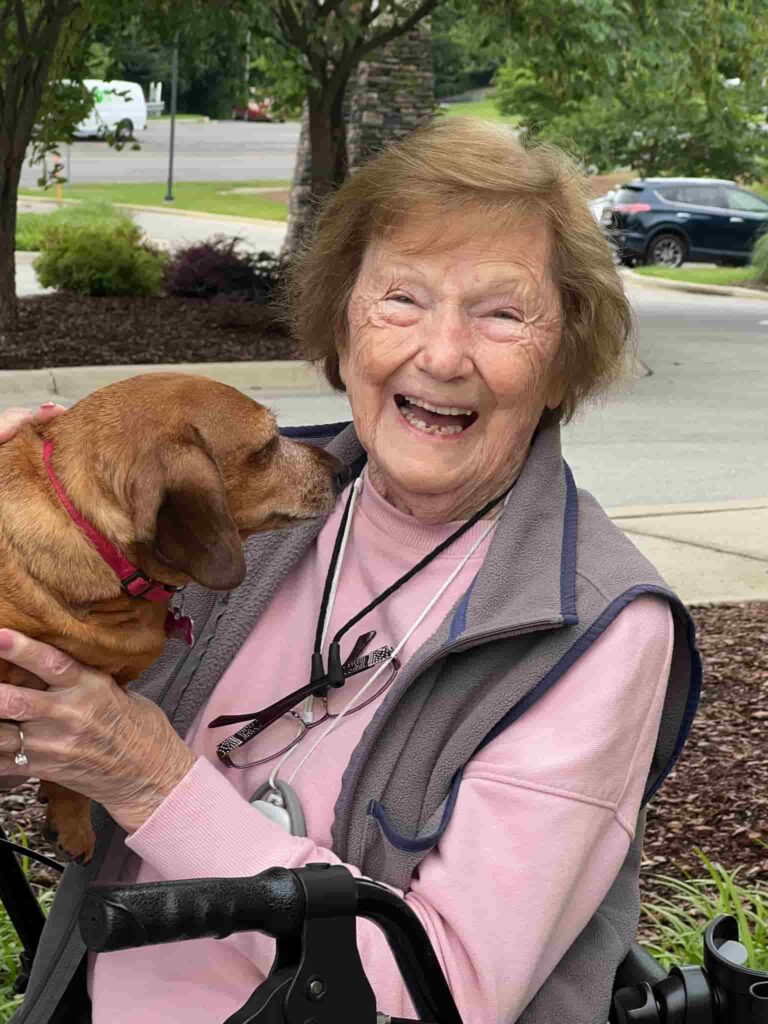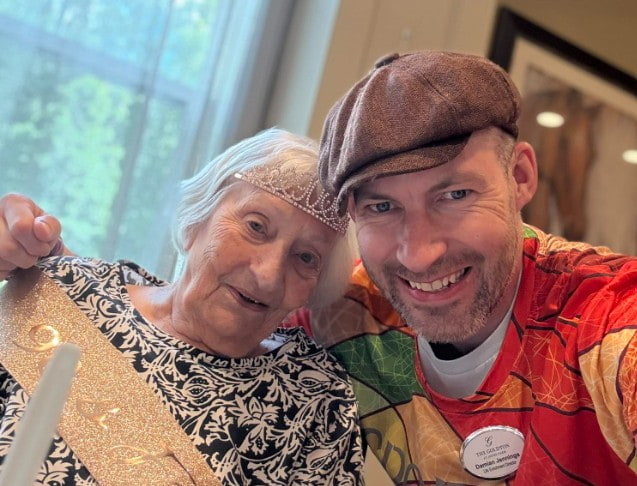Understanding the Differences Between Assisted Living and Memory Care
When it comes to the well-being of a loved one, understanding is not optional—it is the first act of conscious care. Many families confuse Assisted Living with Memory Care, assuming the difference lies only in the intensity of services. But in reality, what separates them is not just how much care is needed—it’s why and how that care is delivered.
Let’s build a map of meaning—not just information.

First Truth: Not all high-level care means Memory Care
Assisted Living is designed for older adults who are still cognitively sound but no longer wish—or are no longer able—to handle everyday tasks on their own. It’s not about dependency. It’s about personalized support within a lifestyle of autonomy. The focus is on independence, dignity, and choice.
Typical features include:
- Help with dressing, grooming, medication management
- Housekeeping, meals, and transportation
- Recreational and social programs
- 24/7 safety without constant supervision
🧠 Memory Care, on the other hand, is built on a different truth:
The person is not only in need of help—they are navigating a different internal reality. The care here is not about doing things for them—it’s about supporting who they are becoming, while reducing confusion and ensuring safety through specialized strategies.
Memory Care often includes:
- Staff trained in Alzheimer’s and dementia-specific care
- Predictable routines to reduce anxiety and agitation
- Secured spaces to prevent wandering
- Therapeutic activities focused on cognitive and sensory engagement
Second Truth: What separates the two is not what is offered—but what is needed
At first glance, both environments offer comfort, structure, and support.
But the real difference lies in this:
- Assisted Living supports the body when the mind still leads.
- Memory Care protects the mind when it begins to fragment or shift.
If your loved one forgets how to use the phone, becomes disoriented in familiar rooms, or confuses morning with night—they don’t simply need reminders. They need an emotionally safe, structured environment that speaks their new internal language.
Third Truth: The right moment to transition is before urgency appears
Families often wait for “something to happen”: a fall, an episode, a crisis.
But wisdom doesn’t wait for disruption—it recognizes pattern.
The most aligned decisions happen when:
- Confusion becomes daily, not occasional
- Familiar routines are no longer understood
- Your loved one is not aware they need help
- Safety is a silent question, not yet a loud emergency
Making the shift before chaos begins isn’t giving up—it’s elevating the care to match the new reality.
Conscious Application: How to know which path you’re truly facing
Ask yourself—not with fear, but with clarity:
- Can my loved one still make simple, independent decisions?
- Do they know what day it is, or recognize their environment?
- Are their memory lapses occasional, or part of their everyday life?
- Can they carry an emotionally coherent conversation?
If you hesitate or answer “not really” to two or more, then the question is not if, but how soon Memory Care becomes the most compassionate next step.
Key Behavioral and Cognitive Signs to Watch For in Your Loved One
Making the decision between Assisted Living and Memory Care isn’t just about filling out checklists. It’s about learning to read the subtle language of change—in behavior, in attention, in memory, and in emotional response.
Often, these signs arrive quietly. They don’t knock.
They fade into conversations, slip through routines, and appear in the spaces between moments.
The key is learning what to notice—and what it means.
Understanding the Two Axes of Change: Behavior and Cognition
In most cases, families notice one of two initial changes:
- Cognitive patterns (how they remember, understand, process)
- Behavioral patterns (how they act, respond, and move through life)
But the transition from Assisted Living to Memory Care doesn’t happen all at once—it moves gradually across these two dimensions.
Here’s how to recognize each one.
COGNITIVE CHANGES: When the mind begins to reroute itself
These changes are internal and often subtle—but powerful in how they shape daily life.
❶ Memory distortion beyond forgetfulness
Normal aging includes the occasional misplaced item or forgotten word.
What signals cognitive decline is when entire sequences, dates, or personal facts become distorted.
Examples:
- Forgetting they’ve already eaten—and eating again
- Calling loved ones by incorrect names repeatedly
- Losing track of time of day, or even the current season
❷ Confusion in familiar environments
Not remembering where the silverware goes in their own kitchen.
Not recognizing the route to their bedroom in a community setting.
This is spatial disorientation—one of the strongest early signs of cognitive drift.
❸ Difficulty following conversations
You notice they can’t follow your train of thought. They repeat ideas, lose context, or answer with unrelated remarks.
This isn’t hearing loss—it’s processing loss.
❹ Decline in judgment and reasoning
They may suddenly:
- Give large sums of money to strangers
- Leave the stove on
- Try to drive again after having stopped
These are not “mistakes”—they’re executive function failures, and they require structured support.
How to Track These Signs Gently but Effectively
Rather than rushing to label everything as a “problem,” become a conscious observer.
✅ Create a Weekly Observation Sheet
Draw two columns: one for Cognitive Signs, one for Behavioral Signs
Under each, write what you notice—without judgment, just facts.
✔ “Forgot grandson’s name twice this week”
✔ “Tried to leave the house at 3am”
✔ “Refused medication, said it was poison”
This record helps you track patterns, not incidents—and it can be shared with doctors or care teams for better assessments.
When to Consider the Transition to Memory Care
If you observe two or more signs from each category consistently over 2–3 weeks, it’s time to consider Memory Care—not as a reaction, but as a proactive evolution of support.
Ask yourself:
- Is my loved one still safe in their current setting?
- Are they able to navigate their day without constant correction or redirection?
- Am I (or their caregivers) compensating for more than they realize?
If the answer is “no” or “not really,” then Memory Care becomes not a consequence—but a gesture of deep, respectful care.
How to Talk About the Transition with Empathy and Confidence
🧭 Step 1: Prepare Yourself First
Before you say a word, do your own emotional homework.
- Clarify your “why.”
Are you motivated by fear? Burnout? Or by a sincere desire to improve their quality of life? - Talk it through with someone neutral.
A friend, therapist, or care advisor can help you filter your emotions so you don’t project them during the conversation. - Write down the facts.
List specific behaviors or changes you’ve observed (see previous section). This helps keep the conversation grounded, not reactive.
🧠 Emotional tip:
If you feel guilt, remember this: Choosing care is not giving up—it’s giving more. More structure. More safety. More peace.
💬 Step 2: Start with Shared Concerns, Not Decisions
Jumping into “we’ve found a place for you” can trigger resistance. Instead, open with mutual reality:
“I’ve noticed you’ve had a hard time remembering if you’ve eaten.”
“You seemed scared the other day when you got turned around in the hallway.”
“I feel like I’m not giving you the kind of support you really deserve.”
These statements create emotional alignment before introducing change.
Then ask open-ended, empowering questions:
- “How are you feeling about how things have been lately?”
- “What would make you feel safer or more relaxed in your day-to-day?”
- “Would you be open to exploring a few options together?”
🔑 Key principle: Move from observation ➝ emotion ➝ collaboration.
🪞 Step 3: Use Language That Protects Dignity
Your loved one may already sense the changes in their life. What they need most is language that reflects their worth, not just their needs.
Instead of:
“You can’t take care of yourself anymore.”
Say:
“You deserve care that truly meets where you’re at now.”
“This isn’t about what you can’t do—it’s about what you no longer have to do alone.”
Use language of partnership:
- “Let’s take this one step at a time.”
- “We can look at different places and see what feels right.”
- “You’re not being ‘moved’—you’re choosing what’s next.”
🌱 Gentle mindset shift: Present the change as a natural evolution, not a downgrade.
🧩 Step 4: Invite, Don’t Impose
You can set the stage—but allow your loved one to step into it.
Practical ways to include them:
- Tour communities together (virtually or in person)
- Look at photos or videos of the spaces
- Involve them in small decisions (e.g., what to bring, room layout)
- Ask: “What would make a place feel like home to you?”
Even small choices restore agency.
🛠️ Step 5: Have the Conversation in Layers
Don’t expect a resolution in one sitting. The most effective conversations happen in waves.
- First mention: Bring up the idea with no pressure—just plant the seed.
- Second wave: Revisit with more context or specific support options.
- Third wave: Explore logistics or take a tour together.
🧠 Why this works: It gives them time to process emotionally, which lowers resistance and increases trust.
📚 Tools and Resources to Support the Process
- Book: Being Mortal by Atul Gawande — Helps reframe aging and care decisions from a place of autonomy and dignity.
- Video: Teepa Snow’s YouTube channel — Offers empathetic, practical language for talking to loved ones with cognitive changes.
- Support: Connect with a senior living advisor or care consultant who can help mediate conversations and provide insight without emotional bias.
- Checklist: Create a “transition plan” document:
- What matters most to your loved one?
- What are your shared non-negotiables (safety, social connection, daily routines)?
- What will help them feel seen and understood?

Closing Thought: Because Care Should Evolve with Love and Intelligence
Recognizing the right level of care for your loved one is not about labeling decline—it’s about meeting change with grace, clarity, and preparedness.
At The Goldton at Jones Farm, we understand that each person’s journey is deeply personal. That’s why we don’t just offer Assisted Living or Memory Care—we offer a path forward that honors identity, preserves dignity, and surrounds each resident with structure, connection, and warmth.
With the integration of Curana Health’s concierge-style primary care, our residents benefit from:
- On-site clinicians and 24/7 medical support
- Enhanced dementia care through the GUIDE Model starting July 2025
- Coordinated preventive and palliative care, including imaging and lab services without ever leaving the community
It’s healthcare designed to remove friction, reduce hospitalizations, and increase comfort—while staying rooted in what truly matters: being seen, being known, and being supported.
Whether your loved one is best suited for Assisted Living with gentle support or Memory Care with specialized attention, our team is here to guide you—without pressure, and with all the care we’d give our own family.
📅 Schedule your personalized tour today and let us help you discover why The Goldton at Jones Farm is one of Huntsville’s top-rated senior living communities—where compassionate care meets lifelong purpose.
